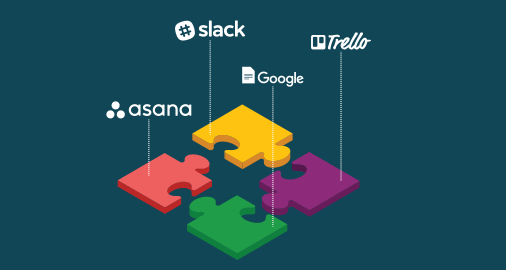
Collaboration Tools Showdown: A Comprehensive Comparison
In the dynamic landscape of modern work, collaboration tools have become indispensable for teams striving to achieve seamless communication, enhance productivity, and foster efficient workflows. With a myriad of options available, each offering unique features and advantages, choosing the right collaboration tool can significantly impact team dynamics. Let’s embark on a comprehensive comparison of some prominent collaboration tools to help you make an informed decision.
Overview:
Microsoft Teams is an integrated collaboration platform within the Microsoft 365 suite, combining chat, video conferencing, file storage, and application integration.
Key Features:
– Chat and Channels: Organize conversations into channels for specific projects or topics.
– Video Conferencing: Schedule and conduct video meetings with internal and external participants.
– Integration with Microsoft 365 Apps: Seamless integration with apps like Word, Excel, and PowerPoint for collaborative document editing.
Pros:
– Tight integration with Microsoft 365 apps.
– Robust security features.
– Extensive customization options.
Cons:
– May require a learning curve for new users.
– Full functionality might necessitate a Microsoft 365 subscription.
—
Overview:
Slack is a widely-used team collaboration platform known for its chat-based communication and extensive integration capabilities.
Key Features:
– Channels and Direct Messages: Organize communication through channels and direct messages.
– App Integrations: Connect with a multitude of third-party apps for enhanced functionality.
– File Sharing: Share documents and files directly within the platform.
Pros:
– User-friendly interface.
– Extensive library of third-party integrations.
– Robust search functionality.
Cons:
– Limited functionality in the free version.
– May lead to information overload with numerous channels.
Overview:
Zoom is a cloud-based video conferencing platform that gained popularity for its simplicity and reliability.
Key Features:
– Video Conferencing: Host virtual meetings with a large number of participants.
– Screen Sharing: Share your screen for presentations or collaborative work.
– Recording and Transcription: Record meetings and obtain transcripts for future reference.
Pros:
– Intuitive interface for video conferencing.
– Versatile features for webinars and virtual events.
– Cross-platform compatibility.
Cons:
– Security concerns in the past (addressed through updates).
– Overemphasis on video conferencing may overshadow other collaboration aspects.
Overview:
Asana is a project management platform designed to help teams organize and track work.
Key Features:
– Task Management: Create and assign tasks to team members.
– Project Boards: Visualize project workflows using boards.
– Timeline View: Plan and manage project timelines.
Pros:
– Intuitive project management interface.
– Flexible task and project customization.
– Integration with various collaboration tools.
Cons:
– Advanced features require a premium subscription.
– Steeper learning curve for comprehensive use.
Overview:
Trello is a popular project management tool known for its simplicity and visual organization.
Key Features:
– Boards and Cards: Organize tasks through boards and cards.
– Checklists and Due Dates: Break down tasks into checklists with associated due dates.
– Collaboration: Team members can comment and collaborate on tasks.
Pros:
– User-friendly and visually intuitive.
– Free version offers essential features.
– Easy to grasp for beginners.
Cons:
– Limited functionality in the free version.
– May lack advanced project management features for complex projects.
Overview:
Google Workspace, formerly G Suite, is a suite of cloud-based collaboration and productivity tools developed by Google.
Key Features:
– Gmail, Google Drive, Docs, Sheets, and Slides: Email, file storage, and document editing in a collaborative environment.
– Google Meet: Video conferencing for remote collaboration.
– Google Calendar: Schedule and organize events seamlessly.
Pros:
– Seamless integration with Google’s ecosystem.
– Real-time collaboration on documents.
– Scalable plans for businesses of all sizes.
Cons:
– Limited offline functionality in some apps.
– Security concerns in highly regulated industries.
Conclusion:
Choosing the right collaboration tool depends on your team’s specific needs, preferences, and workflows. Microsoft Teams and Slack excel in chat-based communication, Zoom is unparalleled for video conferencing, Asana and Trello offer robust project management solutions, and Google Workspace provides a comprehensive suite for cloud-based collaboration.
Consider the nature of your projects, team size, integration requirements, and budget constraints when making your decision. Many teams find success in combining tools for a tailored approach that addresses diverse collaboration needs. Keep in mind that periodic reassessment of tools ensures alignment with evolving team dynamics and project requirements.
